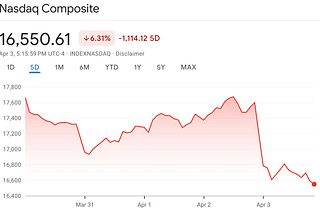
1. Kayfabe
I know Charlie talked about Bill Barr in his newsletter this morning. I want to talk about him, too. But first, we have to start with some pro-wrestling talk. The business of professional wrestling is almost directly descended from carnival work. And as with carnies (small hands!) wrestlers have their own language. Herewith is a very short primer: Marks: People who watch wrestling. Brock Lesnar really got over with the marks last night. Kayfabe: The fictional storyline that is created by wrestlers inside the ring. The Rock'n'Roll Express were kayfabe brothers, but backstage they hated each other. Work: Any piece of business which is pre-planned. It looked like Triple H was assaulting McMahon, but the whole thing was a work. Shoot: Any piece of business which not pre-planned. When Brett Hart flipped out in Montreal, he legit had no idea what was going on. Now that you've got the basics, let's talk about shoots for a minute. There are two kinds of shoot: (1) The straight shoot—something that happens which is legitimately unplanned; and (2) The worked shoot—something which looks unplanned, but is actually completely planned. Some of the best moments in all of professional wrestling involve shoots, because when a shoot is perfectly executed, the marks can never be certain whether it's straight or worked. For example: The Montreal Screwjob is one of the more famous incidents in wrestling lore, where the champion, Bret Hart, was defeated by Shawn Michaels. This defeat was planned by the WWF management, but without the knowledge of either wrestler—they both thought that Hart was supposed to win. At the conclusion of the match, when the referee suddenly declared Michaels the winner, Hart lost his mind. He went backstage and slugged Vince McMahon. Which accomplished a few things:
It put Hart over with wrestling fans in his new promotion.
It turned McMahon into a heel with tremendous heat.
So this was a straight shoot, in that Hart had no idea he was part of a pre-planned story and his reaction was genuine. But it was a worked shoot in that there was a hidden hand manipulating the story independent of the actors. Interesting, right? The greatest shoot of the modern era took place in 2011 as wrestler CM Punk was preparing to leave the WWE. On an episode of Monday Night Raw, Punk entered the ring, did a bit of business, and then began to exit the arena. Except that just before moving to the backstage area, Punk stopped, sat down, and began talking. Punk explained to the audience that the reason he was leaving the company was because the WWE was a joke, run by idiots. He insulted the entire corporate structure of the company and then began to say something about McMahon before his microphone was cut off. (Raw is a live show, so this was all happening in real time.) This may not sound like much but if you have any weakness for wrestling, please do yourself a favor and watch it. Within hours this speech was referred to as "The Pipe Bomb" and it's probably the best moment in the last decade of sports entertainment. https://youtu.be/8u3lV2sf-aQ?t=108 The Pipe Bomb blew people's minds because it was the first time anyone had ever pulled back the curtain like this on the WWE. People couldn't believe that Punk had gone there. It was regarded as the greatest shoot, ever. Except that it turns out to have been a worked shoot. We think. Because think about it: Would a billion-dollar company with decades of experience in producing a live TV product ever let an employee improvise like this? Doubtful. The WWE was in on it the whole time. They had to be in on it the whole time. And the cherry on top was them "cutting" Punk's microphone off when they did. As I said: The greatest worked shoot of all time.
2. Barr
So let's talk about Bill Barr's sudden attack on Donald Trump yesterday. Is it possible that this was a straight-shoot? We should stipulate that anything is possible. But there are three tells that suggest that this was actually a work: (1) The timing. You mean to tell me that after everything Trump has done, it was the tweets about Stone's sentencing that put Barr over the edge? Not the Rudy stuff. Not the Ukraine stuff. The AG who ran active disinformation on the president's behalf in regard to the Mueller report finally broke over a sentencing recommendation for Roger Freaking Stone? (2) Trump's reaction. Donald Trump responds to everything. Everything. Look what he did with the comparatively gentle criticisms of Khizr Khan. Suddenly he's Mr. Calm and Turn the Other Cheek? (3) It helps tell a good story. The whole point of a worked shoot is to move the story in ways you plan out in advance. So what does the Barr criticism do? It helps Barr by painting him as an impartial party. And it helps Trump, by giving his AG more legitimacy—and thus more cover for doing Trump's bidding. I'd go so far as to say that having Barr criticize Trump was the best possible way to enable him to be even more loyal to Trump. Then there's this: We've seen worked shoots before in this administration. When Lamar Alexander wagged his head sorrowfully and said that the Senate didn't need witnesses because Trump was guilty as sin, you'll notice that the White House never responded. That's because Trump knew that Lamar! was just playing a part in order to put his vote to help Trump over. And we've seen straight shoots before in this administration: Just look at Trump's very different reactions to criticisms from Jim Mattis and Rex Tillerson and Jim Comey. The best shoots can leave the audience guessing and arguing about whether it was straight or a work for years. But this little outburst from Bill Barr was so transparently executed that there's really no mystery. One last bit of wrestling terminology: Marks are audience members who think wrestling is "real." There is another type of fan—the wise mark, or smart mark, or smark—who knows that it's all a work and loves wrestling for what it is, not what it pretends to be. You can enjoy wrestling just the same whether you're a mark or a smark. But when it comes to politics, don't be a mark.
3. Rotten Tomatoes
I have never understood why anyone would take a Rotten Tomatoes score seriously. It is one of the minor mysteries of our time. But this Wired piece is still pretty good:
Tim Ryan is an excitable 42-year-old film savant with a mop of reddish hair. In his early twenties, he worked as a newspaper reporter in Rhode Island and spent his downtime bingeing the classics. “Like Godard, and Russian propaganda films,” he says. Eventually he moved to the Bay Area, where the fledgling movie-rating website Rotten Tomatoes was then based. In his quest to devour the entire canon, Ryan had become a Rotten Tomatoes obsessive. When a job opened up at the site in 2004, it felt like a life-changing opportunity. He landed it, and now Ryan compares himself to the Mark Wahlberg character in the critically panned movie Rock Star. He went from “being the biggest fan to being the lead singer.” Ryan is the site's longest-tenured employee, and he recently committed himself to an ambitious project he'd been chipping away at for a while. When I visited the Rotten Tomatoes offices—now in Beverly Hills—in October, he put it this way: “One thing I've been thinking about is, what if Rotten Tomatoes always existed?” Ryan was going to rate every movie ever made. Or, more precisely, every review of every movie ever made.











